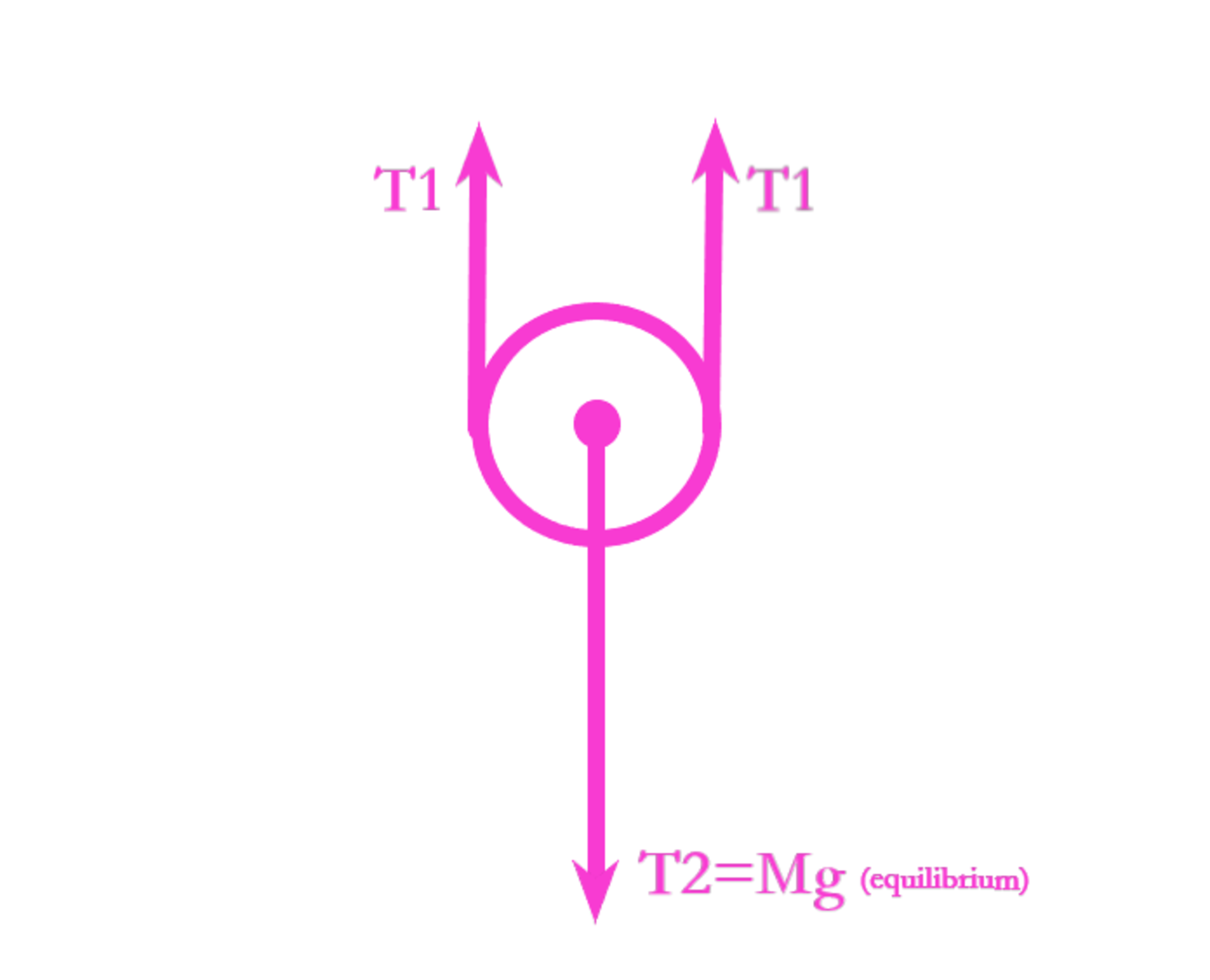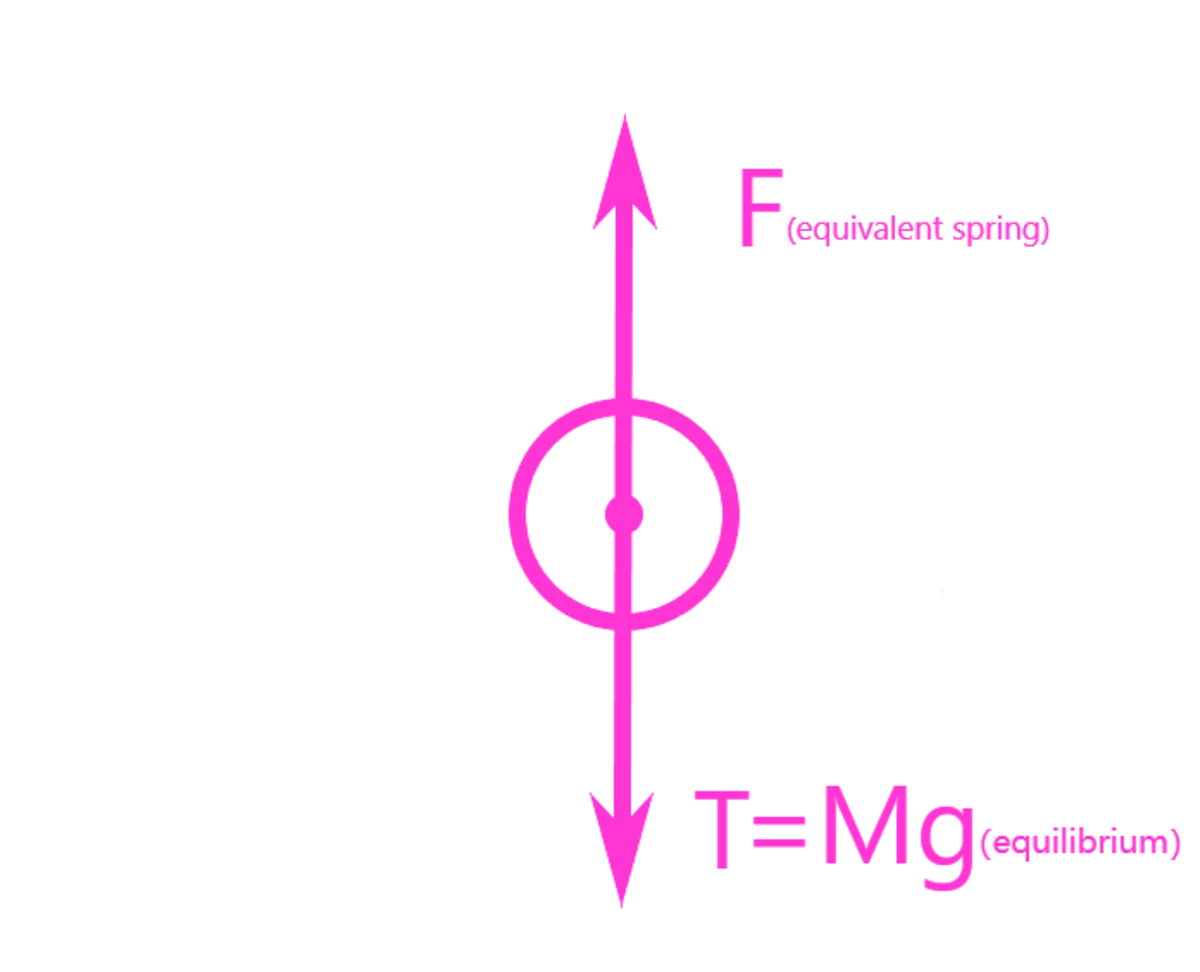Simpler solution of Mechanics Warmups: Level 4 Challenges, problem 3


Since my friends and I are taking non-calculus based Physics classes, we were shocked by the solutions given for their complexity. We found out a much simpler way to solve the problem--even people who have just learnt AP Physics 1 can understand.
First, assume that at the initial conditions (before oscillations start), both of the springs are at their initial lengths. At the instance when the pulley-spring-rope-mass system reaches equilibrium, Free-body Diagram of the movable pulley is shown below, (image 1) where tension in the rope with springs is T1 while tension in the rope to hang the mass is T2. The ropes are massless, so tension should have the same magnitude in a rope.
At that point, the movable pulley is in state of equilibrium so the net force acting on it is zero, which means taking upward to be positive)
Fnet=2T1-Mg= 0,
T1=Mg/2.
Assume that the springs are uniform. By Hooke’s Law, displacements of the springs have magnitude of
ΔX1=F1/K1=T/K1=Mg/2K1 and
ΔX2= F2/K2=T/K2=Mg/2K2, respectively.
The lengths of ropes are unchanged, so the pulley’s displacement from initial position has a magnitude of
ΔXpulley=total increased length of springs(and ropes, which equals 0)=(ΔX1+ΔX2)/2=( Mg/2K1+ Mg/2K2)/2.
Then, consider the springs to be one equivalent spring, whose spring constant can’t be obtained directly from method of connecting springs in series or in parallel (the two springs’ amplitudes are DIFFERENT in the oscillation). Forces acting on the movable pulley can be now considered as: (image 2)
The net force again is zero, so
F equivalent spring=T2=Mg.
Apply Hooke’s Law for a second time,
K equivalent spring=F/ΔX
=F equivalent spring/ΔXpulley=4K1K2/(K1+K2).
Using quantities above, we can get period of the system’s oscillation is
T=2π√(M/K)= 2π√(M/K equivalent spring)= 2π√(M(K1+K2)/4K1K2)
≈0.7695s.
Easy Math Editor
This discussion board is a place to discuss our Daily Challenges and the math and science related to those challenges. Explanations are more than just a solution — they should explain the steps and thinking strategies that you used to obtain the solution. Comments should further the discussion of math and science.
When posting on Brilliant:
*italics*or_italics_**bold**or__bold__paragraph 1
paragraph 2
[example link](https://brilliant.org)> This is a quote# I indented these lines # 4 spaces, and now they show # up as a code block. print "hello world"\(...\)or\[...\]to ensure proper formatting.2 \times 32^{34}a_{i-1}\frac{2}{3}\sqrt{2}\sum_{i=1}^3\sin \theta\boxed{123}Comments
Please use latex... it's almost unreadable.
Log in to reply
Sure, I'll try to fix it. Thanks! :)